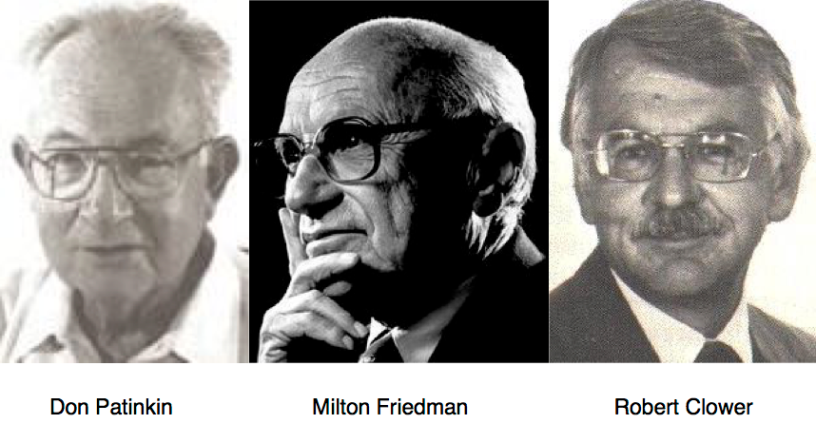Money, the existence of which in a modern economy is usually taken for granted, performs three main functions. First, it is a unit of account, second it is a universally accepted means of payment, and thirdly, it is a store of value.
While in models without money one can only analyze the determination of real variables, such as the quantities of goods and services produced and consumed, and their relative prices, in models with money one can also determine nominal variables such as the price level, nominal income, the level of nominal wages, nominal interest rates and inflation. These nominal variables are expressed in terms of money.
In this chapter we focus on the money market in order to analyze the demand for money and the determination of nominal variables such as the price level, nominal interest rates and inflation.
Monetary conditions in modern economies are determined by central banks. The central bank may affect, through a variety of policy instruments at its disposal, both the quantity of bank notes (and coins) in circulation, and, indirectly, the amount of deposits in commercial banks, which are also part of the money supply. Alternatively, a central bank may follow an interest rate rule, intervening in the money market and pegging nominal interest rates. In this case, the stock of money in the economy is determined by the demand for money, and the money supply adapts to demand in order to achieve the goal of the central bank regarding the nominal interest rate.
The demand for money depends on three main factors.
The first factor is the price level. The higher the level of prices, the higher will be the amount of money that households and firms will want to hold for their current and future transactions. The demand for money is usually assumed to be proportional to the price level. This demand stems from the roles of money as both a unit of account and a means of payments.
The second factor is the volume of transactions, usually measured by aggregate real output and income. When the volume of transactions increases, households and firms will need more money to carry out their increased transactions. This determines the demand for real money balances, and stems from the role of money as a means of payments.
The third factor is the level of nominal interest rates. Banknotes pay no interest. On the other hand, demand deposits and current accounts in commercial banks, even when they pay interest, yield a very low return compared with the yields of less liquid assets such as time deposits, treasury bills and bonds. In what follows we shall maintain the assumption that money pays no interest. Thus, as interest rates rise, households and firms will want to hold a smaller part of their assets in the form of money, compared to interest yielding assets such as time deposits, bonds, or other less liquid assets. Consequently, the demand for money will depend negatively on the level of nominal interest rates.
In this chapter, we first review the basic functions of money and the factors that determine the demand for and supply of money. We analyze the concept of short run equilibrium in the money market, assuming that the central bank follows a policy of either targeting the money supply or pegging nominal interest rates, and also define the notion of the long-run neutrality of money.
We then focus on a number of dynamic general economic equilibrium models with money, we analyze the determination of the price level and nominal interest rates and refer to the long relationship between the money supply, the price level and inflation.
Finally we examine the fiscal incentive for increasing the money supply and its effects on inflation. The most important motive for sustained large increases in the money supply by governments has been the incentive to finance government expenditure that could not be financed by other methods, such as additional taxes or government bonds. This source of revenue for the government is called seigniorage. The main cause of all episodes of sustained high inflation or even hyperinflation, has been the need of governments to use their privilege of printing money, in order to obtain seigniorage.
We examine both the case in which the maximum income from seigniorage in equilibrium is adequate for the financing needs of a government, a situation which can result in an equilibrium with high inflation, as well as the case in which the maximum revenues from seigniorage are not sufficient for the financing needs of the government, which can lead to hyperinflation, which is a disequilibrium phenomenon.
…

